Thin-film pressure sensors, with their high sensitivity, flexibility, low cost, and ease of integration, are finding increasing applications in the medical field. These sensors provide innovative solutions for various medical applications, from patient monitoring to diagnostic tools, enhancing the quality of care and patient outcomes. This article explores the specific applications and advantages of thin-film pressure sensors in the medical field.
Working Principle of Thin-Film Pressure Sensors
Thin-film pressure sensors are constructed from flexible materials, typically comprising two conductive films separated by an insulating layer. When external pressure is applied, the distance between the films changes, causing a variation in electrical resistance. The sensor detects these changes in resistance to measure the magnitude and distribution of pressure, providing accurate and real-time data crucial for medical applications.
Advantages of Thin-Film Pressure Sensors in Medical Applications
- High Sensitivity: Thin-film pressure sensors can detect even the slightest pressure changes, which is essential for monitoring vital signs and other critical parameters in medical settings.
- Flexibility and Comfort: These sensors are made of flexible materials that can conform to various body parts without causing discomfort, making them ideal for continuous monitoring.
- Low Cost: The manufacturing cost of thin-film pressure sensors is relatively low, making advanced medical monitoring accessible and affordable.
- Ease of Integration: These sensors can be easily integrated into different medical devices and equipment, enhancing their functionality without requiring complex installation procedures.
Specific Applications of Thin-Film Pressure Sensors in the Medical Field
- Patient Monitoring: Thin-film pressure sensors can be used to continuously monitor vital signs such as heart rate, respiratory rate, and blood pressure. They can be integrated into wearable devices or directly into hospital beds to provide real-time data, allowing for timely intervention in case of any abnormalities.
- Pressure Ulcer Prevention: Bedridden patients are at high risk of developing pressure ulcers. Thin-film pressure sensors can be embedded in mattresses to monitor pressure distribution and alert caregivers to reposition patients, preventing the formation of pressure sores.
- Prosthetics and Orthotics: These sensors can be integrated into prosthetics and orthotics to measure pressure and ensure proper fit and comfort. This data can help in adjusting the devices for optimal performance and comfort.
- Surgical Applications: Thin-film pressure sensors can be used during surgeries to monitor pressure applied by surgical instruments, ensuring precision and reducing the risk of tissue damage.
- Rehabilitation: In rehabilitation settings, these sensors can be used to monitor the pressure exerted by patients during physical therapy exercises. This data helps in tailoring rehabilitation programs to individual needs and tracking progress.
- Diagnostic Tools: Thin-film pressure sensors can be part of diagnostic tools to measure intraocular pressure for glaucoma patients or to assess bladder pressure in urological studies. Their high sensitivity and accuracy make them valuable for early diagnosis and monitoring of various conditions.
Future Prospects
The future of thin-film pressure sensors in the medical field is promising. With ongoing advancements in sensor technology, their accuracy, reliability, and application range will continue to improve. Integration with artificial intelligence and machine learning algorithms will enable more sophisticated data analysis, leading to better predictive insights and personalized medical care.
Innovations may also expand the use of these sensors to monitor additional physiological parameters, such as temperature and biochemical markers, providing a comprehensive health monitoring system. As sensor technology evolves, thin-film pressure sensors will play an increasingly vital role in enhancing medical care and improving patient outcomes.
Conclusion
Thin-film pressure sensors offer innovative and practical solutions for the medical field. Their high sensitivity, flexibility, low cost, and ease of integration make them ideal for various applications, including patient monitoring, pressure ulcer prevention, prosthetics, surgical applications, rehabilitation, and diagnostics. As technology advances, the application of thin-film pressure sensors will become more widespread, significantly enhancing the quality of medical care and patient well-being.



